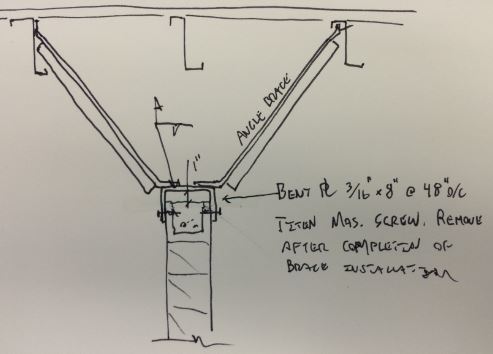ThorenO
Structural
- Jan 8, 2013
- 22
Hello,
I have a partial height (15') masonry wall that I am kicking/bracing perpendicular to a Z-Purlin(s) in a low-seismic region.
In order to keep the roof deflection / or any expansions from producing a force at the top of the wall, does anyone have any ideas for a medium-duty connection detail for both the top of the wall and at the roof.
Will also span a cross member to engage an additional adjacent purlin for the loading.
Thanks for any feedback in advance.
I have a partial height (15') masonry wall that I am kicking/bracing perpendicular to a Z-Purlin(s) in a low-seismic region.
In order to keep the roof deflection / or any expansions from producing a force at the top of the wall, does anyone have any ideas for a medium-duty connection detail for both the top of the wall and at the roof.
Will also span a cross member to engage an additional adjacent purlin for the loading.
Thanks for any feedback in advance.

